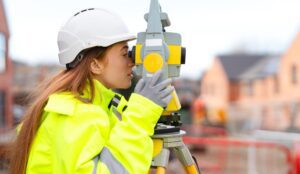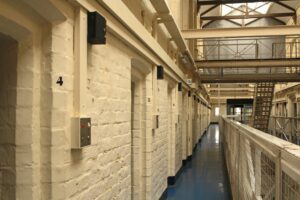
The Silent Edge: Why Survey Accuracy Is Becoming a Competitive Advantage
For a long time, accuracy in land surveying was seen as a background function—essential, yes, but invisible to clients, stakeholders, and even many project leads.
Now that’s changing. Accuracy is quietly becoming a front-line differentiator. And companies that take it seriously are finding themselves ahead of the curve, especially in industries like construction, infrastructure, real estate, and renewable energy.
When you think about competitive advantage, you might picture faster timelines, lower costs, or unique expertise. But what if one of the biggest advantages was something less visible—something embedded deep in your field data?
That’s where survey accuracy enters the conversation.
It’s Not Just Tech—It’s Trust
Accuracy is no longer just a deliverable; it’s a signal. It tells clients, regulators, and partners that your company is precise, reliable, and ready for scale. That signal starts with your tech stack—specifically, the equipment you use to collect spatial data.
For companies still relying on outdated tools, the gap is widening fast. Today’s most accurate systems are powered by innovations in GNSS Receivers for Surveying Accuracy, which leverage satellite constellations, real-time correction services, and intuitive user interfaces to deliver pinpoint precision—even in challenging terrain or urban environments.
But here’s the key takeaway: this isn’t just about the gear. It’s about what the gear represents to people making high-stakes decisions.
Precision Builds Credibility from the Ground Up
Let’s say you’re a midsize construction firm bidding for a commercial project. You’re not the cheapest bidder. But you walk into the pitch with high-quality, time-stamped survey data backed by top-tier equipment. You explain how that data reduces the risk of rework, smooths the permitting process, and supports transparent reporting.
Suddenly, you’re not just another bidder—you’re the responsible partner. You’re the safe bet.
Clients—especially institutional ones—are increasingly prioritizing risk mitigation over bare-bones pricing. When you can demonstrate that you have the technical infrastructure to prevent expensive mistakes down the line, you shift the conversation from cost to value.
Permits, Plans, and Paper Trails: The Accuracy Advantage
Regulatory hurdles are another place where precise surveys make a real difference. Whether it’s a local council or a national agency, authorities don’t like surprises—and neither do banks or insurers.
GNSS-enhanced surveys reduce the chance of discrepancies between site measurements, digital models, and legal boundaries. That means fewer redraws, faster approvals, and less chance of a nasty delay mid-build. In competitive sectors, that edge can make the difference between being ready to break ground and waiting six weeks on a resubmitted boundary report.
It’s not dramatic—but it’s powerful.
The Data-First Shift in Construction and Development
We’re living in an era of predictive analytics, BIM modeling, and drone site inspections. If your foundational data is off by even a few centimeters, everything that follows is vulnerable.
High-accuracy GNSS receivers play a huge role in making sure your digital models are worth trusting. That’s not just a technical concern. For investors, lenders, and government partners, data integrity is becoming a non-negotiable.
As construction moves toward more automation and digital twin technology, firms that invest in accuracy today are better positioned to adopt the next wave of tech tomorrow.
Small Firms, Big Gains
Think accuracy is just a “big firm” advantage? Not anymore. In fact, smaller operators often stand to gain the most. Why?
Because one mistake—a miscalculated boundary, an unexpected topographic issue, or a failed inspection—can hit a smaller business harder. There’s less room for error, less capital to burn, and often a more direct relationship with clients.
With the availability of affordable, portable GNSS tools, even small surveying teams can level up their data quality. That investment pays off quickly in reduced site revisits, fewer disputes, and more predictable cash flow.
Plus, let’s be honest—smaller firms that show up with the same tools as the big players send a clear message: we’re serious, we’re modern, and we’re here to compete.
Accuracy Is Branding (Whether You Like It or Not)
We talk a lot about brand as something built by logos, slogans, or content. But in technical sectors, your brand is built as much by your data as by your marketing.
When stakeholders know your surveys are consistently precise, your drawings match reality, and your project handoffs are friction-free, they remember. Accuracy becomes part of your reputation. It builds trust. It gets you referrals just like in GNSS Receivers for Surveying Accuracy.
It’s also what turns a one-time contract into a long-term relationship.
A New Language of Accountability
In today’s high-stakes business climate, there’s less tolerance for vagueness. CEOs, project managers, and procurement officers want traceability. They want confidence in the numbers they’re working from.
By using high-performance GNSS receivers and transparent surveying workflows, you speak that language of accountability fluently.
You’re not just saying “we’ll get it done”—you’re showing exactly how, with timestamped geospatial data, margin-of-error stats, and a tech-enabled audit trail. That matters.
Why This Matters More Than Ever in 2025
This shift toward data-driven confidence isn’t happening in a vacuum. In 2025, businesses are operating in tighter regulatory environments, with more scrutiny on ESG, transparency, and land use. Supply chains are global, deadlines are tighter, and project timelines leave less margin for correction.
That’s why accuracy—particularly when baked into the earliest project stages—is becoming a premium business value. Companies that treat it as such are getting ahead, while others scramble to correct costly oversights.
A Smart Competitive Play, Not Just a Tech Upgrade
Ultimately, investing in survey accuracy is about playing the long game. It’s a smart move for businesses that want:
- Faster project approvals
- Better client and stakeholder trust
- Lower rework and litigation risk
- A reputation for professionalism and precision
Yes, the tools matter. Yes, the training matters. But what really separates leaders from followers is the understanding that survey accuracy isn’t just an input. It’s an asset.
Final Thoughts: You Don’t Need to Be the Biggest—Just the Most Precise
You don’t need to outspend your competitors to outperform them. You just need to out-measure them.
In an era where time, trust, and transparency are at a premium, survey accuracy becomes more than just a technical feature—it becomes the silent edge that wins you the next contract, saves you from the next delay, and earns you a reputation that travels further than any brochure ever could.



